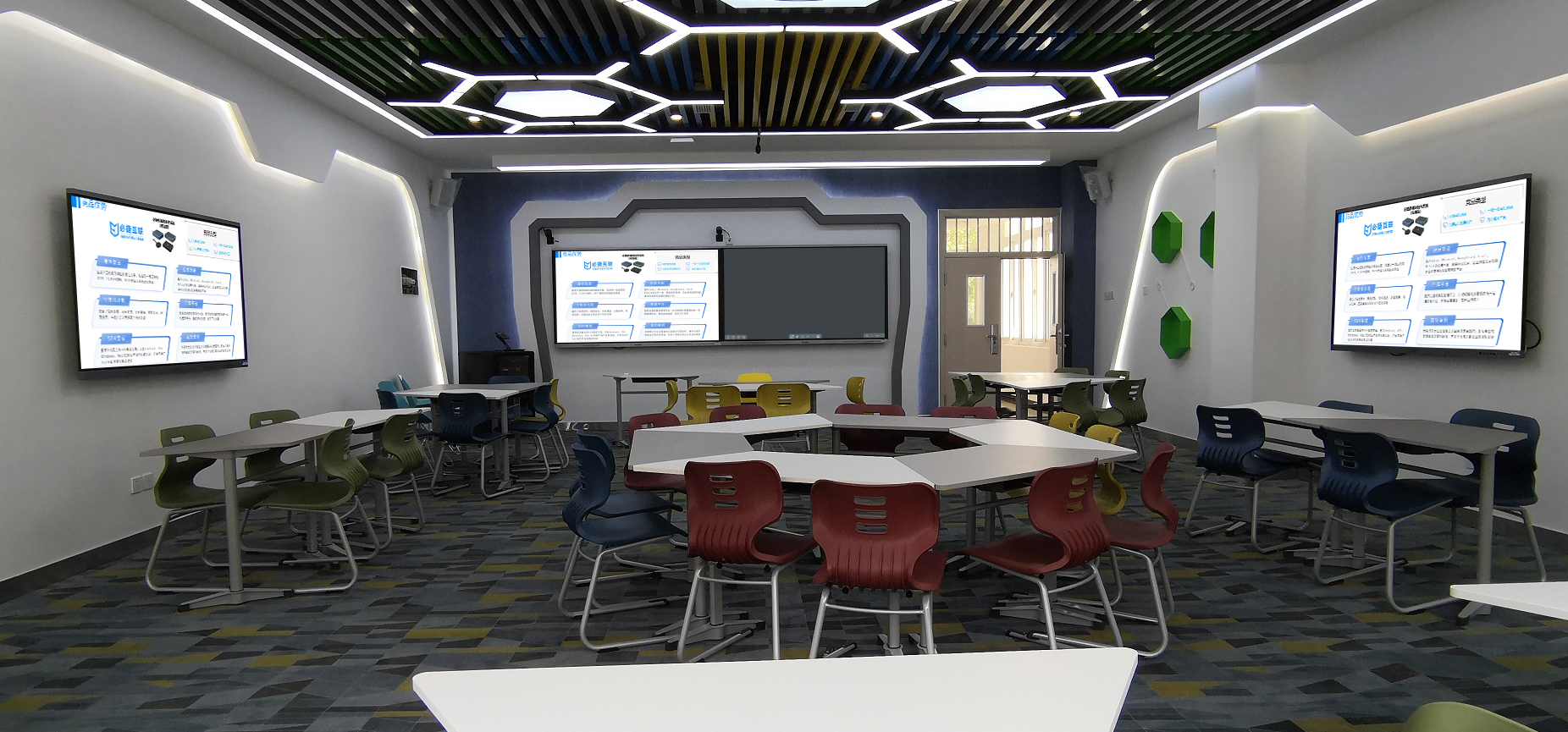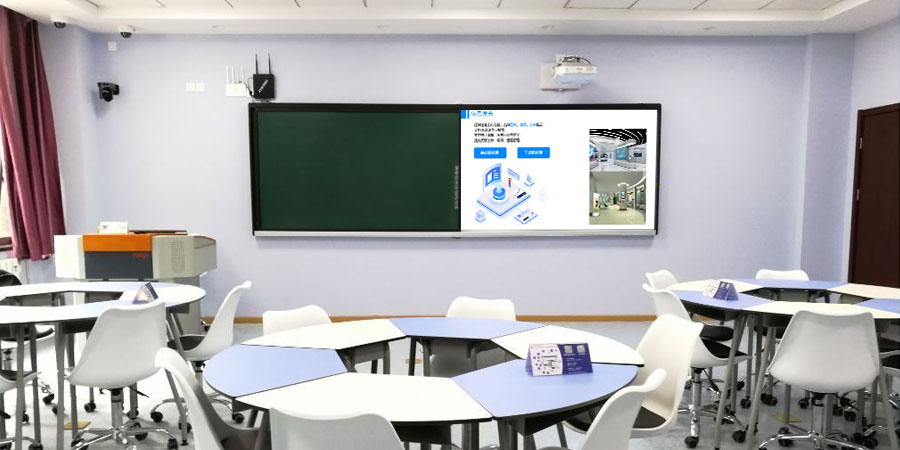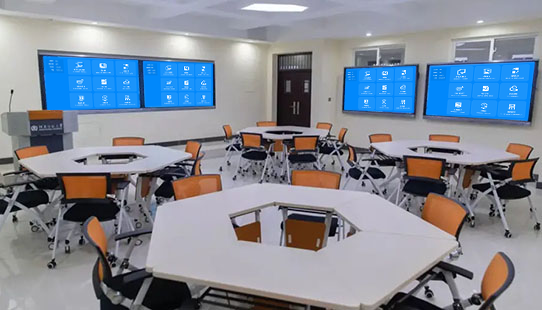Interactive Classrooms: Transforming Teaching from One-Way Transmission to Two-Way Resonance
Interactive classrooms break the traditional “teacher lectures, students listen” model. Through device interconnection, real-time feedback, and collaborative co-creation, they transform the classroom into a space for deep interaction between teachers and students, and among students themselves. Here, knowledge is no longer a one-way infusion but naturally consolidates through questioning, discussion, and practice, allowing every student to become a participant and creator in the classroom.
I. All-Scenario Device Interaction: Breaking Down Educational Information Barriers
(I) Seamless Multi-Terminal Connection
The teacher’s computer, tablet, and phone form an interconnected network with the classroom’s main screen and student devices, supporting wireless screen mirroring, file transfer, and remote control. Teachers can mirror courseware from their computers to the main screen, simultaneously film students’ practice processes with their phones, and push these in real-time to group screens. Students submit assignments from their tablets, with content synchronously displayed on the teacher’s device and the main screen, and grading results provided instantly, improving information flow efficiency by 80%.
(II) Borderless Cross-Screen Collaboration
The main screen can not only receive content but also reverse-control connected devices. Teachers can directly annotate essays submitted from student tablets on the main screen, with changes synchronizing back to the student’s device. Students’ questions about knowledge points annotated on group screens can be pushed to the main screen with one click for whole-class discussion. In a biology class, students can film cell images under a microscope with their tablets. When mirrored to the main screen, the teacher can use a stylus to circle key structures, with explanations simultaneously recorded. After class, students can review and precisely locate key points.
II. Innovation in Teaching Models: From Passive Reception to Active Participation
(I) Real-Time Quizzing and Data Feedback
Teachers can initiate various question types, including multiple-choice, true/false, fill-in-the-blank, and handwritten questions. After students answer on their devices, the main screen generates a data report in 3 seconds, showing accuracy rates, error option distribution, and typical answer displays. In a math class’s formula application quiz, for questions with a 70% error rate, the teacher can immediately adjust their explanation focus and conduct targeted practice. In a Chinese language reading comprehension quiz, 3 excellent answers with different approaches can be displayed to guide students in broadening their thinking.
(II) Group Collaboration and Outcome Co-creation
It supports 6-8 person group discussions, with each group equipped with a group screen to record the discussion process in real-time. Members can annotate documents and draw mind maps with different colored pens, and the group leader can integrate results and push them to the main screen with one click. In a history class “Dynasty Comparison” discussion, each group presents its viewpoints using a timeline. After being displayed in a split-screen on the main screen, the teacher guides the whole class to extract commonalities and differences, boosting classroom participation from 50% to 95%.
III. Resource Consolidation and Reuse: Making Teaching Effectiveness Traceable
(I) Full Digital Archiving of Classroom Sessions
Teachers’ courseware, blackboard notes, recorded explanations, student answer records, annotated content, and group outcomes are automatically saved to the cloud, categorized by course chapter. After class, students can review recorded lessons with teacher annotations, pausing to re-take notes on key content. Teachers can analyze answer data to identify students’ knowledge weak points and adjust the next lesson’s teaching plan, forming a “teaching – feedback – optimization” closed loop.
(II) Personalized Learning Paths
The system automatically pushes micro-lesson videos and practice exercises related to knowledge points based on students’ answer performance and incorrect answer records. In an English class, students weak in grammar receive targeted tense exercises, while students with strong reading abilities get extended reading materials, achieving precise “teaching according to aptitude” and improving learning efficiency by 60%.
IV. Scenario-Based Applications: Visible Teaching Effectiveness
(I) Primary and Secondary School Classrooms
- Chinese Language Interaction: Students work in groups to adapt textbook scripts, film performance segments with tablets, and mirror them to the main screen. The whole class votes for the best creative idea, making the classroom atmosphere lively and deepening comprehension of the text.
- Physics Experiments: Groups collaboratively complete circuit connection experiments, filming the operation process with phones and mirroring them to group screens. The teacher remotely observes and annotates incorrect steps, improving experiment success rates from 65% to 92%.
(II) Vocational Education Classrooms
- Skills Training: Culinary students film their knife skills practice with their devices. The teacher compares standard actions with student operations on the main screen, providing real-time corrections, accelerating skill mastery by 50%.
- Simulation Operations: Nursing students use virtual simulation software to practice injections. The operation process is mirrored to the main screen, and the teacher annotates key procedural considerations, allowing the entire class to learn standardized procedures together.
The core value of interactive classrooms lies in shifting the focus of “teaching” and “learning” from “knowledge transmission” to “ability cultivation.” Teachers transform from “lecturers” into “guides,” and students from “listeners” into “participants.” Through real-time interaction and collaborative co-creation, knowledge is truly internalized into ability, and the classroom becomes a dynamic space for growth.